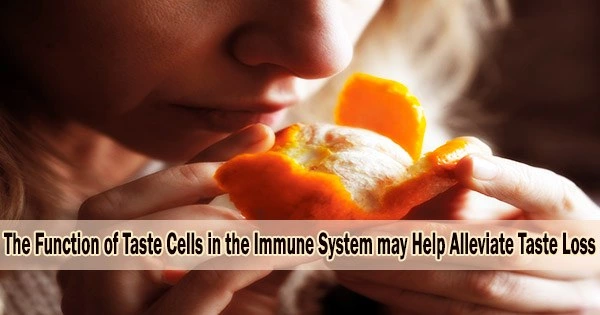Taste cells may play a role in the immune response and may lead to new treatments for taste loss. However, more research is needed to fully understand the connection between taste cells and the immune system, and how it may be used to treat taste disorders.
While taste cells are frequently exposed to oral microorganisms, little is known about how they contribute to how the body reacts to them. A recent study from a team of researchers from the University of Nebraska-Lincoln and other institutions, however, has found that a subset of taste cells called type II taste cells may play a key role in the body’s immune response to harmful oral microbes.
The findings of the three-year study, which were just published in PLOS Biology, may be used to address taste loss brought on by illnesses like infection, aging, obesity, and cancer chemotherapy.
Transcytosis is the process by which microfold cells, which are specialized epithelial cells in the tonsils and gut, transfer microbiota samples to immune cells in the corresponding region. This allows those immune cells to orchestrate an appropriate immune response.
The widespread loss of taste in COVID-19 patients highlighted this understudied area of taste research. We believe that discovering the M cell pathway in taste cells is a big step toward preventing and treating infection-associated taste loss.
Professor Sunil Sukumaran
The researchers found that Spib, a key gene required for the development of M cells, is also expressed in type II taste cells and wanted to determine whether the taste cells have the same immune-related function as the M cells.
“This study breaks new ground by demonstrating that type II taste cells function like M cells in responding to the microbiota,” said Sunil Sukumaran, assistant professor of nutrition and health and the corresponding author of the study. “M cells are key to maintaining a healthy microbiota in the gut, and our finding suggests that type II taste cells do the same, in addition to their known roles in taste signaling.”
The researchers found that RANKL, a growth factor that functions via the Spib gene and is necessary for the development of M cells in the tonsils and stomach, can also encourage M cell proliferation in taste tissue.
Additionally, Spib knockout mice displayed disruption of immune signaling pathways in taste papillae and had significantly less immune cells there. Interestingly, they were more drawn to sweet and umami flavors.
“Until recently, our understanding of how taste cells respond to microbes in the oral cavity was very limited,” Sukumaran said. “The widespread loss of taste in COVID-19 patients highlighted this understudied area of taste research. We believe that discovering the M cell pathway in taste cells is a big step toward preventing and treating infection-associated taste loss.”
















